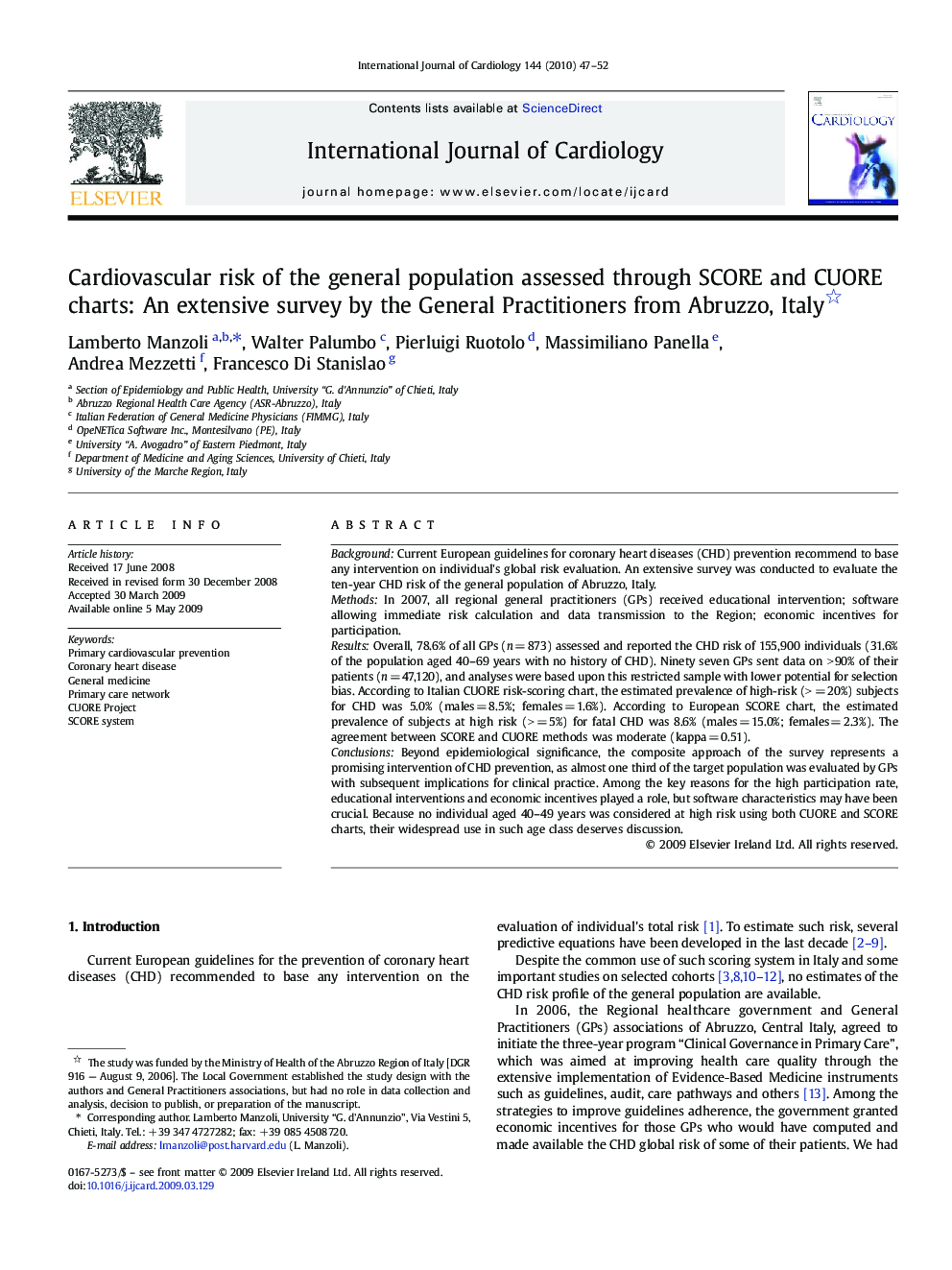| Article ID | Journal | Published Year | Pages | File Type |
|---|---|---|---|---|
| 5979426 | International Journal of Cardiology | 2010 | 6 Pages |
BackgroundCurrent European guidelines for coronary heart diseases (CHD) prevention recommend to base any intervention on individual's global risk evaluation. An extensive survey was conducted to evaluate the ten-year CHD risk of the general population of Abruzzo, Italy.MethodsIn 2007, all regional general practitioners (GPs) received educational intervention; software allowing immediate risk calculation and data transmission to the Region; economic incentives for participation.ResultsOverall, 78.6% of all GPs (n = 873) assessed and reported the CHD risk of 155,900 individuals (31.6% of the population aged 40-69 years with no history of CHD). Ninety seven GPs sent data on > 90% of their patients (n = 47,120), and analyses were based upon this restricted sample with lower potential for selection bias. According to Italian CUORE risk-scoring chart, the estimated prevalence of high-risk (>  = 20%) subjects for CHD was 5.0% (males = 8.5%; females = 1.6%). According to European SCORE chart, the estimated prevalence of subjects at high risk (>  = 5%) for fatal CHD was 8.6% (males = 15.0%; females = 2.3%). The agreement between SCORE and CUORE methods was moderate (kappa = 0.51).ConclusionsBeyond epidemiological significance, the composite approach of the survey represents a promising intervention of CHD prevention, as almost one third of the target population was evaluated by GPs with subsequent implications for clinical practice. Among the key reasons for the high participation rate, educational interventions and economic incentives played a role, but software characteristics may have been crucial. Because no individual aged 40-49 years was considered at high risk using both CUORE and SCORE charts, their widespread use in such age class deserves discussion.
